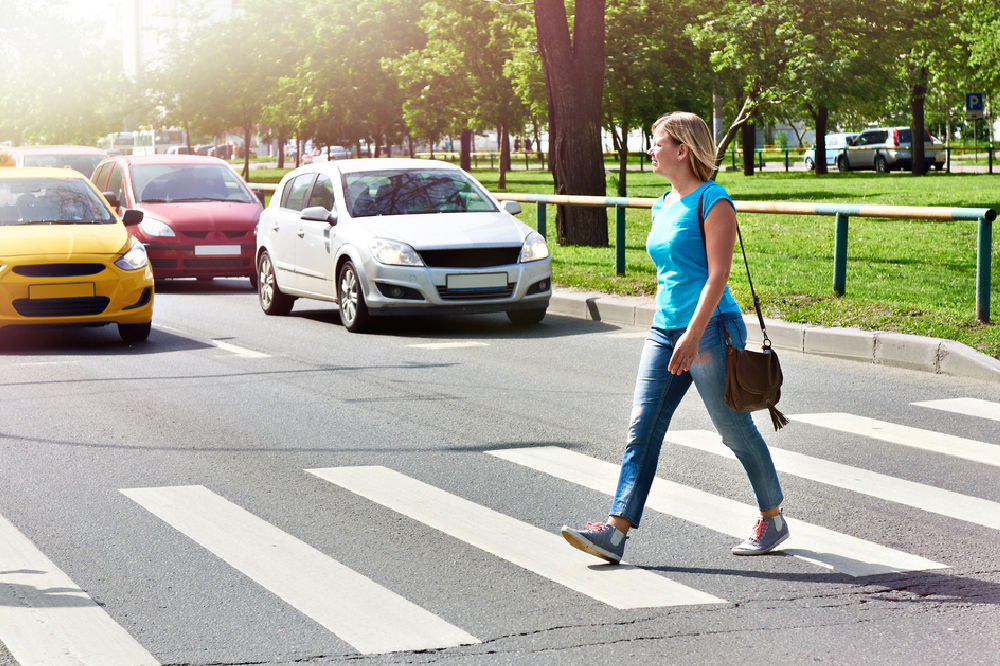Living in a city or driving through a busy downtown, you’ll see a great deal of both pedestrian traffic and vehicle traffic. High traffic volumes increase the potential for accidents, especially pedestrian-motorist accidents. In 2019 alone there were over 1,500 pedestrian/motorist collisions in Indiana. Physical or mental injuries are common in these incidents. You need help proving who was at fault and getting any compensation you are owed. That’s where the expertise of an Indiana pedestrian injury attorney who knows the ins and outs of Indiana Pedestrian Laws can help.
Causes of Pedestrian Accidents
Even minor accidents can be detrimental to the pedestrians involved and, subsequently, the driver at fault. However, most motorist-pedestrian accidents can be avoided by both the driver and the pedestrian.
Common causes for motorist-pedestrian accidents include:
- Being distracted while walking or driving
- Walking or driving while under the influence of drugs or alcohol
- Speeding
- Failure to understand the right of way
- Pedestrians not ensuring they are visible in low-light times of day
You might assume that in most situations or any motorist-pedestrian accident the driver would be considered at fault. We often hear that pedestrians always have the right of way, but that is a false statement. Pedestrians can be at fault.
Even minor accidents can be detrimental to the pedestrians involved and, subsequently, the driver at fault. However, most motorist-pedestrian accidents can be avoided by both the driver and the pedestrian.
Preventing Pedestrian Accidents and Injuries
As a pedestrian in Indiana, your actions impact the potential of being in an accident. There are specific laws you must adhere to for your safety and the safety of others. Suppose an accident occurs and you didn’t properly follow these laws. In that case, you will be held partially or solely liable for the accident.
Indiana Pedestrian Laws
- Traffic Control Signals: Traffic signals, especially pedestrian-specific ones such as crosswalks, must be obeyed unless otherwise directed by law enforcement.
- Jaywalking: In Indiana, crossing a street at an unmarked crossing area is illegal. Motorists will not be expected to slow or stop for someone in an undesignated area of the road.
- Sidewalks: If available, a pedestrian must use a sidewalk. If one isn’t available, you can use the shoulder or bike lane.
- Yielding: Pedestrians must yield to oncoming traffic unless at a designated crosswalk, with permission to proceed.
- WUI: Pedestrians may not walk while intoxicated. The legal limit of alcohol consumption is 0.08% and applies to drivers and pedestrians alike.
- Stopped Vehicles: If a vehicle is stopped, it doesn’t guarantee you the right of way; you must wait until you are given the proper signal to proceed safely.
The Responsibility of a Driver
Drivers must also follow the law to prevent motorist-pedestrian accidents. It is just as much their responsibility as it is for pedestrians to follow the law and prevent accidents.
Laws drivers are required to follow:
- Coming to a complete stop at stop signs and red lights
- Yielding when indicated at crosswalks
- Not overtaking a crosswalk (especially when turning)
- Driving the speed limit
- Not driving under the influence of drugs and alcohol
- Not overtaking or passing another vehicle that is stopped for a pedestrian
Pedestrian Accident Compensation
Indiana is a comparative fault state meaning the fault may be shared by multiple parties involved in an accident.
For example, a pedestrian crosses the street without a crosswalk or control signal and fails to yield to oncoming traffic. At the same time, a motorist runs a red light while speeding. The pedestrian is hit by the driver. This scenario could result in both parties being held liable for the accident. The percentage of fault is important because, in Indiana, an injured party may only be awarded compensation from the insurance company if they are less than 50% at fault. This is why it is so important to allow an Indiana personal injury attorney to handle your case.
Pedestrians need to be aware of the risks they take when they break the law. Beyond personal and public safety being put at risk, there could be serious financial and legal repercussions to your decision.
Count on Crossen Law Firm
At Crossen Law Firm, we understand that accidents happen, and when they do, it can be stressful to navigate liability and understand who’s at fault. We are dedicated to doing the work to get you your full compensation after an accident. We can answer any questions about Indiana pedestrian laws and much more. If you or a loved one have been in a pedestrian-motorist accident and are seeking legal guidance, let us help you today. Give us a call at 317-401-8626.

 317-401-8626
317-401-8626 
.jpg)